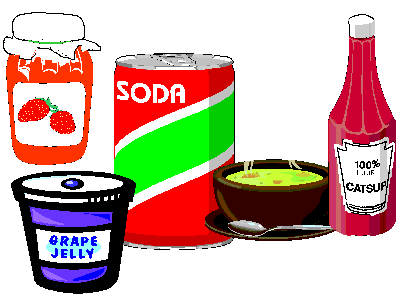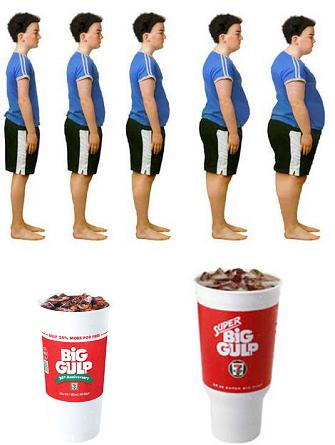By Walter Sorochan
Posted June, 2010; updated October 29, 2021. Disclaimer
Farmers are growing dent corn Article about 6. dent corn is no longer active. that is used to make a special type of sweetener called high-fructose corn syrup [ HFCS ]. It costs much less [ -30% ] than
 beet sugar [ which is sucrose ], consequently it is used to sweeten almost all processed foods in grocery stores and in restaurants. This sweetener is hidden from you as it is mixed into the food. For example, corn syrup is added to pancake mix, to pancake syrup and to ketchup. You can’t see it, but it makes the food taste better and so you eat more of the food [ and the corn syrup ]. So what is so bad about corn syrup as a sweetener?
beet sugar [ which is sucrose ], consequently it is used to sweeten almost all processed foods in grocery stores and in restaurants. This sweetener is hidden from you as it is mixed into the food. For example, corn syrup is added to pancake mix, to pancake syrup and to ketchup. You can’t see it, but it makes the food taste better and so you eat more of the food [ and the corn syrup ]. So what is so bad about corn syrup as a sweetener?
Corn syrup has been linked to causing a number of health problems: notably obesity and diabetes, and suspected in causing cardiovascular disorders and colorectal cancer in women. Some persons are allergic to corn and will get sick from corn syrup. Article 4. by Critser is no longer active., Article 8. by Emathis's blog website is no longer active., 15. Klein: How US became fat, Article 18. by Poirot is no longer active., Article by Weatherby: Corn syrup unnatural is no longer active.
Controversy: There is some controversy about the corn syrup causing health problems. Although the link to obesity is belittled by papers and research paid for by the corn industry Article by White is no longe active., Article by Weatherby: Corn syrup unnatural is no longer active., independent research validates the concern over corn syrup and health. Corn syrup alone is not the sole cause of obesity. There are other contributing causes. The controversy is more about the government subsidies for corn. Article 4. by Critser is no longer active., 10 government ]
In order to understanding just how corn syrup disrupts the normal functioning of metabolism and digestion in the body, one has to examine its biochemistry. Corn syrup is made up of a two simple sugars: fructose and glucose. Fructose is digested differently from common sugars like glucose. For example, Glucose causes fat cells to release the hormone leptin that makes you feel full. Glucose also prevents the stomach from releasing the hormone ghrelin that makes you hungry. The leptin makes you feel full so you eat less.Article in 2. American Journal is no longer active., Article in 9. Experimental and Clinical Endocrinology is no longer active., Walker: Does corn syrup cause obesity
On the other hand, fructose does not cause fat cells to release leptin and does not suppress ghrelin. This means that fructose increases hunger to make you eat more. Furthermore, the liver converts fructose far more readily to a body fat called triglyceride, than it does with glucose. Article in American Journal is no longer active., Article in 9. Experimental and Clinical Endocrinology is no longer active., Article by 22. Walker is no longer active. ]
 The main point being made is that fructose adds to overeating because it does not trigger chemical messengers that tell the brain the stomach is full and to stop eating!
Instead, the brain tells you that you are still hungry. Eat More! and then a little more! Now, don't the extra calories feel good, especially around the stomach?
Your brain remembers this and the next time you go out to eat, your brain says "Hey, get me that corn syrup food!" Your brain sends you a message to eat the food again!
It seems that the corn syrup has conditioned your brain into eating corn syrup again.... " a possible addiction??"
The main point being made is that fructose adds to overeating because it does not trigger chemical messengers that tell the brain the stomach is full and to stop eating!
Instead, the brain tells you that you are still hungry. Eat More! and then a little more! Now, don't the extra calories feel good, especially around the stomach?
Your brain remembers this and the next time you go out to eat, your brain says "Hey, get me that corn syrup food!" Your brain sends you a message to eat the food again!
It seems that the corn syrup has conditioned your brain into eating corn syrup again.... " a possible addiction??"
The end result is that our bodies are essentially tricked into wanting to eat more and at the same time, we are storing more fat. Article 19. Severson: Drowning in corn syrup It becomes easy now to link corn syrup to obesity. People eating foods and drinking beverage drinks with corn syrup eat more; they take in more calories than their body needs and store the excess calories as body fat. Numerous researchers have confirmed that there is a relationship between corn syrup and the obese epidemic in the United States and Canada. Article 2. American Journal is no longer active., Article 9. Experimental and Clinical Endocrinology is no longer active., Article by Walker is no longer active.
Major Problem: The exact amount of corn syrup used in various foods is a company secret and difficult to uncover. Processed foods sold in grocery stores must print on the label all ingredients in the food item, including corn syrup or HFCS but not the amount. The closer it is near the beginning the greater percent amount.
What do you do? Three major places where corn syrup may be found or used in foods:
 1. Grocery stores: many if not most processed foods use HFCS. Before buying, read the small fine print on the Label
1. Grocery stores: many if not most processed foods use HFCS. Before buying, read the small fine print on the Label
Read the Labels & look for corn syrup in small print. Don't buy product if the label has corn syrup or HFCS on the label.
2. Fast food restaurants: Best to avoid eating fast foods. HFCS is hidden in buns, soft drinks, pastry, desserts, ketchup and sauces.
3. Restaurants all kinds: HFCS may be hidden in soft drinks, pastry, desserts, ketchup and sauces. No one knows whether corn syrup is used, how much, etc.. “Ask the waitress to ask the cook if corn syrup is in the food you want to order. [ They probably don’t know].
Eat & COOK at home: Cook your own food in your kitchen, don’t use corn syrup ingredients, poly saturated or saturated fats. You need to avoid corn syrup. Get control of your life and start eating a healthy diet.
Food products with high fructose corn syrup [ avoid ]: [ incomplete list ]
- applesauce
- Breads white
- Candy, marshmellows
- Cereals with the Heart Healthy Claims
- Chocolate bars
- Coffee whiteners
- Desserts: Pies, Puddings
- English muffins
- Hot dog buns
- Ice Cream: including Sandwiches
- Jellies
- Ketchup: 1 tbsp = 1 tspn sugar
- Pancakes, hotcakes, waffles
- Pastry: cinnamon buns, bran muffins, cakes
- Pizza crust & dough
- Processed foods
- Salad Dressings: especially “ lite” and “reduced calorie”
- Smoothies: e.g. Hansen's Super Vita orange-carrot: 10 teaspoons of sugar
- Snack foods
- Sodas: 12oz = 13 tspns of hi-fructose corn syrup {HFCS ] Walker: Does corn syrup cause obesity e.g. Sunkist, coca cola
- Spaghetti sauce
- Special K cereal
- Syrups: pancake
- Yogurt: e.g. lowfat fruit flavores = 10 tspns HFCS Article 19. Severson: Drowning in corn syrup
- Yoplait Yogurt all varieties
Incomplete list; Read the Label
These substitutes should be free of corn syrup. But always read the label:
[ Remember: These substitutes for corn syrup are still sugar and sugar has calories! You replace one evil with another. ]
- granulated sugar
- brown sugar rice syrup or glucose syrup
- maple syrup
- molasses
- honey
- treacle
References:
1. ABC News, “Corn: Fueling the Fast Food Industry and Obesity,” New Documentary 'King Corn' Exposes the Ubiquity and Potential Harm, March 13, 2008.
2. American Journal of Clinical Nutrition, Vol. 76, No. 5, 911-922, November 2002.
3. CORN SYRUP: Sweetener, thickener: Candy, marshmallows, syrups, snack foods, imitation dairy foods. Corn syrup, which consists mostly of dextrose, is a sweet, thick liquid made by treating cornstarch with acids or enzymes. It may be dried and used as corn syrup solids in coffee whiteners and other dry products. Corn syrup contains no nutritional value other than calories, promotes tooth decay, and is used mainly in foods with little intrinsic nutritional value. Center for Public Interest: Food Additives
4. Critser Greg, "Fat Land: How Americans Became the Fattest People in the World.".University of California Press: Houghton Mifflin Company. Boston, Massachusetts, USA.,2004, 224 pp [ lays out a compelling case against high fructose corn syrup ]
5. Dean Shea, " Children of the Corn Syrup, " The Believer, OCTOBER 2003. Article by Dean: Children of corn syrup is no longer active.
6. Dent corn: is the most widely grown type of corn, and constitutes about 73 percent of the U.S. annual crop. When one sees a large field of corn, it is most likely a field of dent corn, as the other types [ sweet corn that we eat ] are usually grown on much smaller parcels. The term “field corn” usually refers to dent corn, but may also be applied to flint and flour types as well. The endosperm of dent corn has both the flinty-type starch and the softer flour starch. The term “Dent” refers to the characteristic depression in the top of the kernels.
The leaves and stems of dent corn form the basis of the silage industry’s ruminant animal food products made from the composted, green corn-plant parts. The tall towers so common in the Corn Belt farm areas are the sophisticated compost bins where silage is produced. Many Dent-corn green parts are also pressed to extract corn syrup. [ refer to footnote # 7 ]7. Dougherty Chuck Jr., “High Fructose Corn Syrup - the new plague, “ Search Warp Writer’s Community, April 21, Article by Dougherty: Corn syrup plague is no longer active.
8. Emathis’s Blog, “ Just say no to high fructose corn syrup,” Friday, June 06, 2008
Article by Emathis's blog website is no longer active.
[ lots of references to health effects ]
“ High Fructose Corn Syrup is found in fruit drinks like Capri Sun, Sunny Delight, Snapple, Hawaiian
Punch, Ocean Spray Cranberry Juice and in most energy drinks. It is also found in chocolate drinks like
Yoohoo, Arizona Tea, SoBe Beverages, cookies, ice cream, Campbell soup, Heinz Ketchup, Ragu, Aunt
Jemima Syrup, Hershey's Syrup, Breyers Yogurt, Kraft Barbecue Sauce, Smucker's Preserves and some
breakfast cereals. High fructose corn syrup masquerades under the name of crystalline fructose in Glaceau Vitamin Water
and some energy drinks.
9. Experimental and Clinical Endocrinology & Diabetes 2002 Thema: Poster Diabetes, Metabolism and Gastrointestinal Hormones. p184.
10. Government subsidies: Instead of growing food for people, government subsidies pay farmers to grow corn as animal fodder, for ethanol [Ethanol gasoline fuel is commonly called E10 ] and to make the sweetener corn syrup. Very small amount of corn as food is grown. 90 % of “ subsidies “ corn grown today cannot be eaten by humans. Instead most of this corn is used for animal feed, to produce ethanol and corn syrup. Article by Government subsidies website is no longer active.
13. How did corn syrup become king of the food industry? Dean Shea, " Children of the Corn Syrup, " The Believer, OCTOBER 2003. Article by Shea: Cildren of corn syrup website is no longer active. High-fructose corn syrup was, to the food industry, a miracle product. Six times sweeter than cane sugar, it could be made at a fraction of the cost and used as a preservative, a sweetener, or both. By the late 1970s it was being pumped into frozen foods to protect them from freezer burn and to “long-shelf-life” products to keep them “fresh-tasting.” The very definition of empty calories, it was added to packaged pastries to make them look as if they were baked in the past decade and to fast-food drumsticks and hamburgers to keep them from shriveling up under heat lamps. In the early 1980s, Coke and Pepsi switched from a fifty-fifty blend of cane and corn sugar to 100 percent high-fructose corn syrup (HFCS), lopping 20 percent off their production costs. Critser calls the shift “one of the most important changes to the nation’s food supply.”
14. ____ “ How The Food Industry is Deceiving You! “ Pro Healthy Blog, Feb 15 2008. Article by Pro Health food Industry deception is no longer active.
15. Klein Samuel, “ Review: Fat land: how Americans became the fattest people in the world,” Journal of Clinical Investigation, January 01, 2004. 15. Klein: How US became fat
16. Low Nicholas H., “ Using GC to Detect Food Adulteration,” Agilent technologies, Department of Applied Microbiology and Food Science, University of Saskatchewan, Saskatoon (Canada)
Article by Low detecting adulteration is no longer active.
“ commercially available sweeteners that approximate the carbohydrate composition of apple juice are
beet/cane invert sugar (IS; 1:1 ratio of fructose to glucose), high-fructose corn syrup (HFCS, specifically
HFCS 55; 55% fructose and 40% glucose), and high-fructose insulin syrup (HIS; fructose-to-glucose ratios
of 8:1 to 3:1)."
17. Mathews Ruth, et la., Sugar content of selected foods, USDA Report # 43. Article 17. by Mathews sugar content in foods is no longer active.
18. Poirot Carolyn, “ High-fructose corn syrup fueling obesity epidemic, doctors say,” The Seattle Times, December 2005 Article 18 Poirot: corn syrup fueling obesity is no longer active. Referenced to Dr. George Bray [ professor of medicine at the LSU Medical Center ]:
19. Severson, Kim, “ Sugar coated: We're drowning in high fructose corn syrup. Do the risks go beyond our waistline? “ San Francisco Chronicle, February 18, 2004. Article 19. Severson: Drowning in corn syrup
20. Types of corn syrup:
19. Wikipedia: types of corn syrup
High-fructose corn syrup (HFCS) is any of a group of corn syrups which have undergone enzymatic
processing in order to increase their fructose content and are then mixed with pure corn syrup (100%
glucose) to reach their final form.
The typical types of HFCS are:
- HFCS 90 (used almost exclusively in the production of HFCS 55) which is approximately 90% fructose and 10% glucose
- HFCS 55 (most commonly used in soft drinks) which is approximately 55% fructose and 45% glucose
- HFCS 42 (used in a variety of other foods, including baked goods) which is approximately 42% fructose and 58%
The process by which HFCS is produced was first developed by Richard O. Marshall and Earl R. Kooi in 1957[2]. The industrial production process was refined by Dr. Y. Takasaki at Agency of Industrial Science and Technology of Ministry of International Trade and Industry of Japan in 1965-1970. HFCS was rapidly introduced in many processed foods and soft drinks in the US over the period of about 1975–1985.
In terms of sweetness, HFCS 55 is comparable to table sugar (sucrose), which is a disaccharide of fructose
and glucose.[3] This makes it useful to manufacturers as a possible substitute for sucrose in soft drinks and
other processed foods. HFCS 90 is sweeter than sucrose, while HFCS 42 is not as sweet as sucrose.
Cane sugar and Beet sugar are both relatively pure sucrose.
Honey typically has a fructose/glucose ratio similar to HFCS 55 “
21. ___, “Study: High Fructose Corn Syrup Used in Soda Linked to Diabetes,” Fox News, August 28, 2007 21. Study: Corn syrup linked to diabetes
22. Walker Jamal, “Does Hi-Fructose corn syrup cause Obesity? “ Her Active Life, August 17, 2007 Walker: Does corn syrup cause obesity
23. White John S. and Foreyt John F, “ Ten myths about high-fructose corn syrup,” Food Technology. Article by White: Corn syrup myths is no longer active.
24. Weatherby Craig, “High-Fructose Corn Syrup Declared Unnatural,” Vital Choices, April 21, 2008 VOLUME 5
ISSUE 211. Article by Weatherby: Corn syrup unnatural is no longer active.
[ FDA classifies HFCS as a synthetic compound, forcing big food and beverage makers to forgo the
lucrative “natural” label. ]